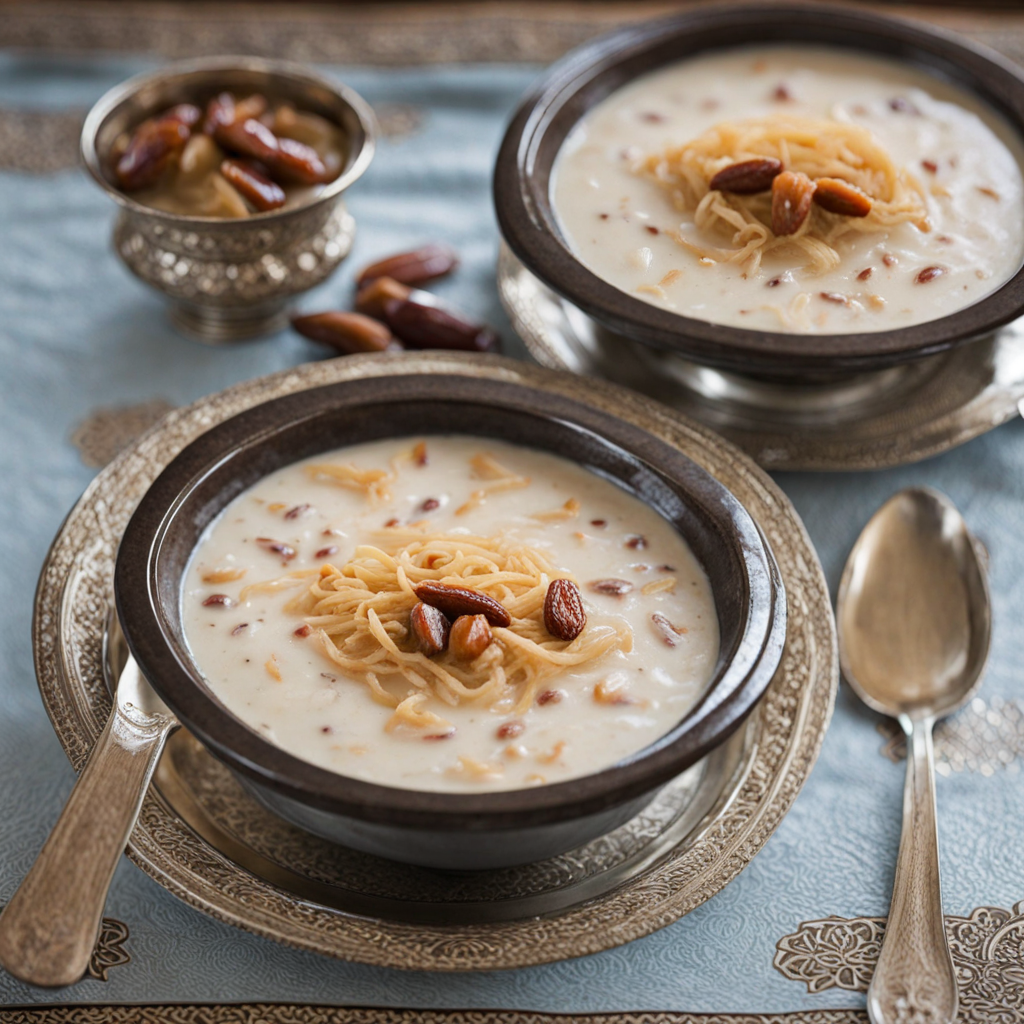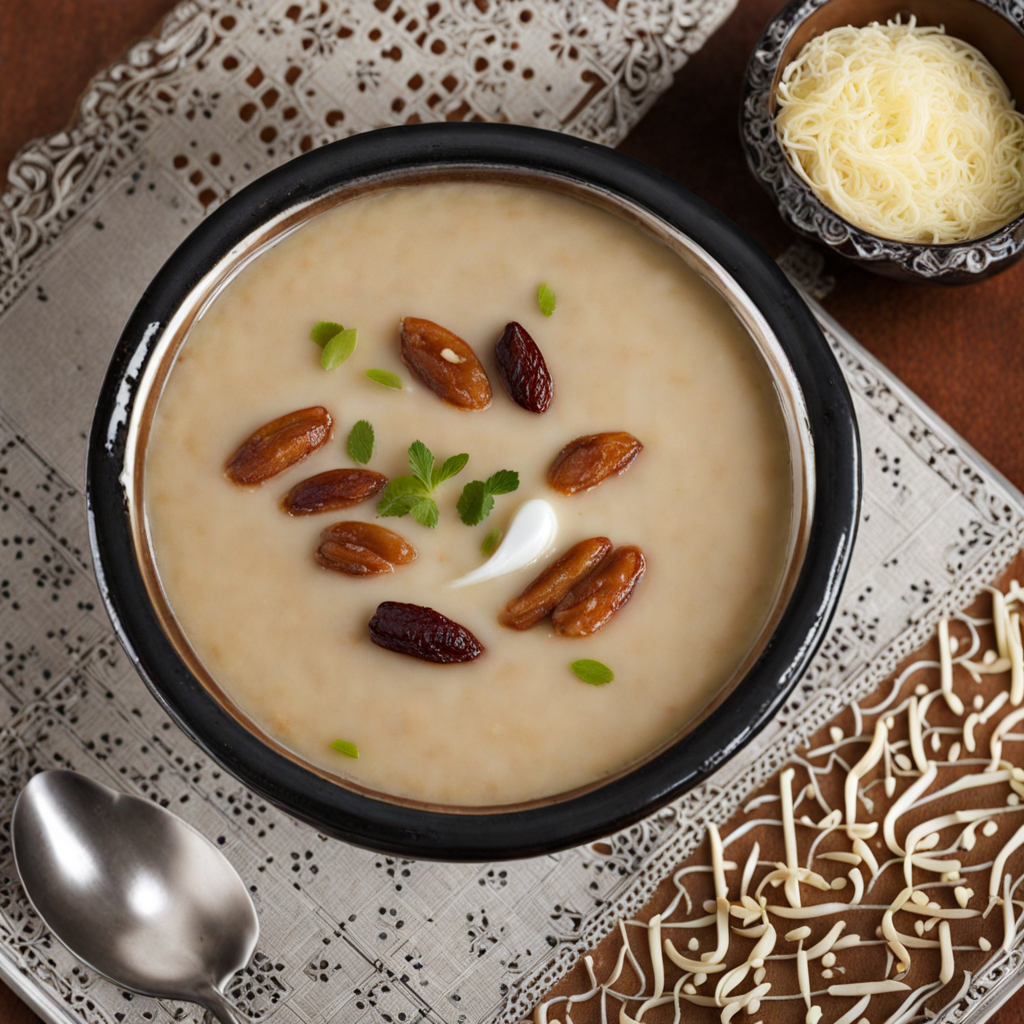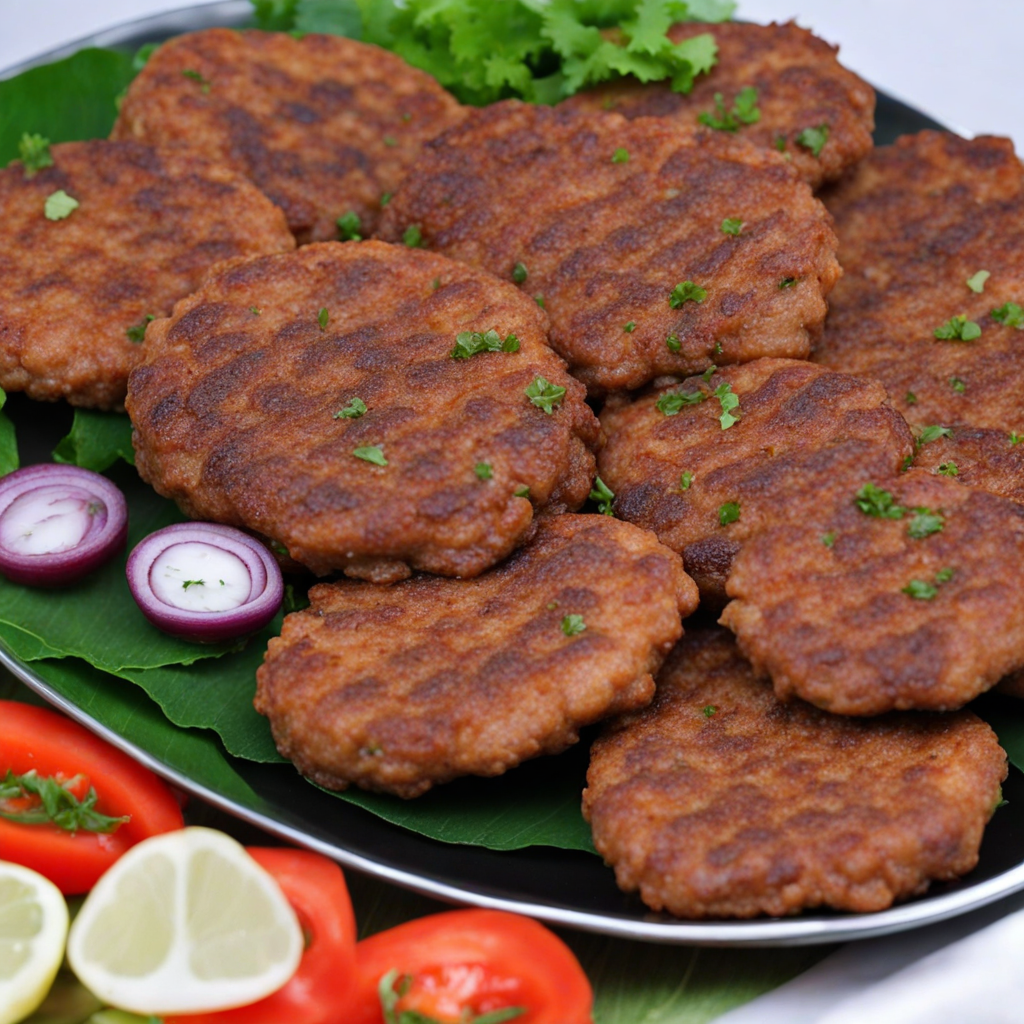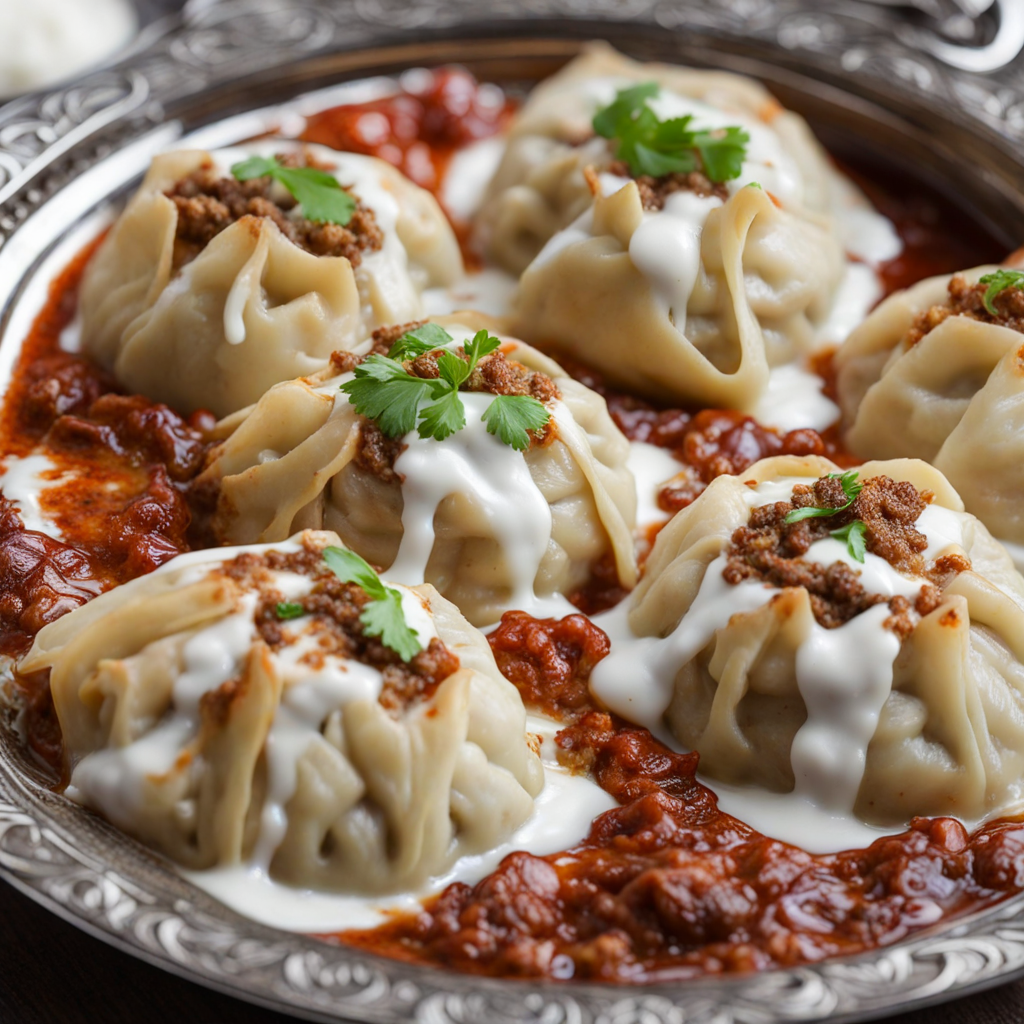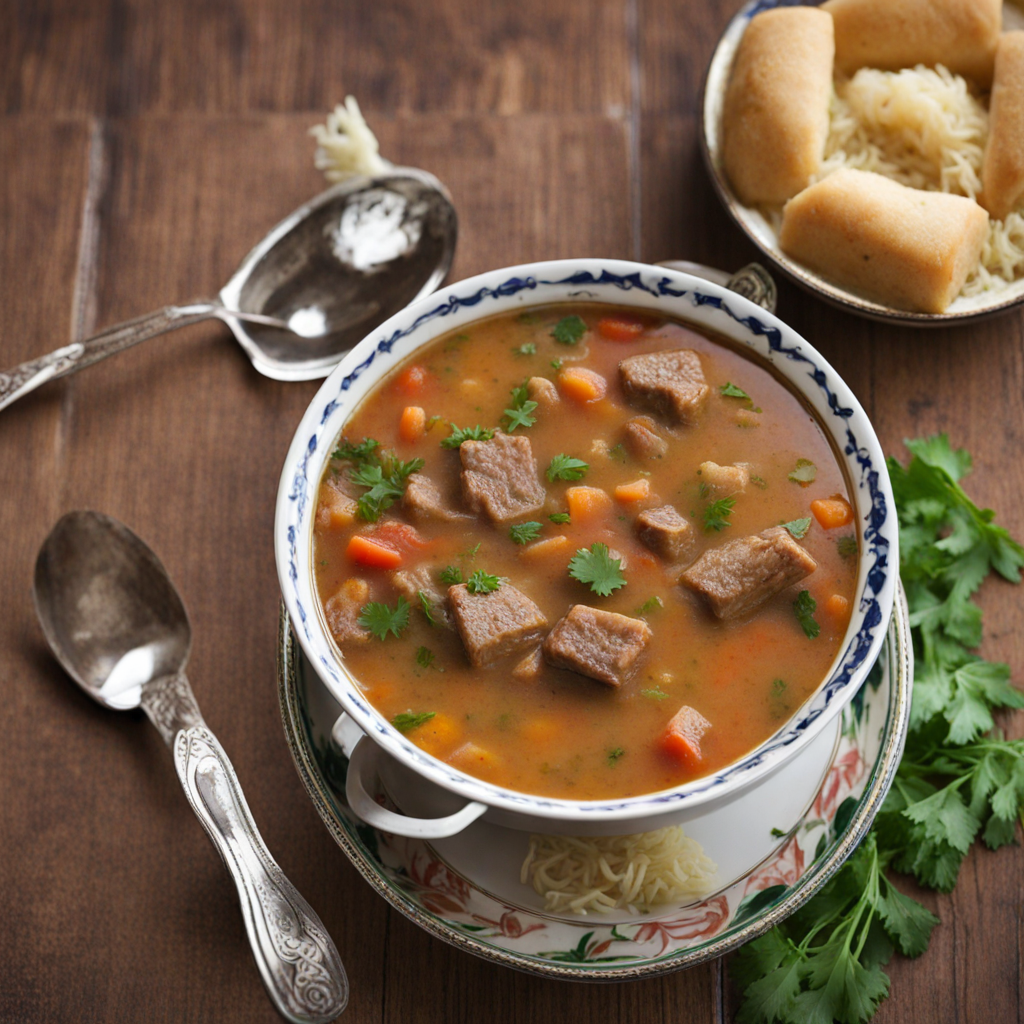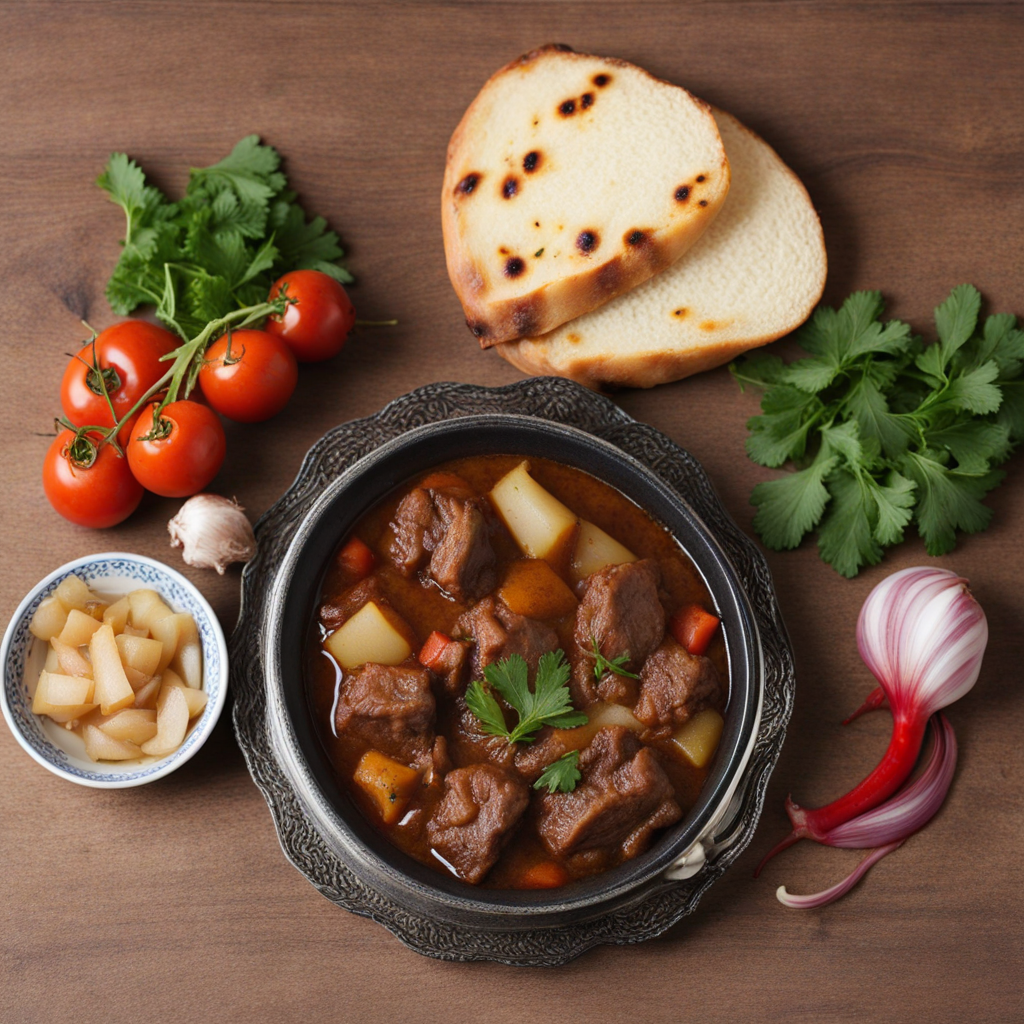Sheer Khurma
شیر خرما, or "date milk," is a traditional Afghan beverage that embodies the rich culinary heritage of the region. This delightful drink is particularly popular during the holy month of Ramadan, where it serves as a nutritious option for breaking fast. The combination of dates and milk not only nourishes the body but also offers a taste of Afghanistan's agricultural bounty, showcasing the region's abundant dates and dairy products. The history of شیر خرما can be traced back to ancient times, when dates were a staple in the diets of various cultures across the Middle East and South Asia. In Afghanistan, dates have long been cultivated, particularly in the southern provinces, where the climate is ideal for growing this sweet fruit. The practice of blending dates with milk likely originated as a means to create a replenishing and energy-rich drink that would sustain individuals during fasting or after long days of labor. Over time, شیر خرما has evolved into a beloved comfort food, often enjoyed by families and served at gatherings. The flavor of شیر خرما is a harmonious blend of sweetness and creaminess. The natural caramel-like sweetness of the dates complements the rich, creamy texture of the milk, resulting in a drink that is both satisfying and indulgent. Depending on the type of dates used, the flavor can vary from mildly sweet to intensely rich, with hints of toffee and vanilla. When prepared with fresh milk, the drink takes on a velvety smoothness that enhances the overall experience. Some variations may also include spices such
How It Became This Dish
Origin of شیر خرما The traditional Afghan dish known as شیر خرما, or "milk with dates," has its roots deeply embedded in the agricultural practices and cultural traditions of Afghanistan. The origin of شیر خرما can be traced back to the ancient agricultural communities that flourished in the fertile valleys of the region. Dates, a staple fruit cultivated in many parts of the Middle East, have been a significant source of nutrition for centuries. The combination of milk and dates is not only a testament to the richness of Afghan agriculture but also highlights the ingenuity of the local people in utilizing available resources to create wholesome meals. The earliest records of date cultivation date back to 4,000 BCE in regions of Mesopotamia, with trade routes later facilitating the spread of this fruit across various cultures, including those in Afghanistan. The integration of dairy products into the diet also has a long history in the region, with nomadic herders relying on milk from their livestock. This combination of milk and dates symbolizes the fusion of agrarian and pastoral lifestyles that characterize Afghan society. \n\n Cultural Significance In Afghan culture, شیر خرما holds a special place not just as a food item, but as a symbol of hospitality and nurturing. It is often served during significant occasions, such as religious festivals, marriages, and family gatherings. The dish embodies the warmth and generosity of Afghan hospitality, where sharing food is a cherished custom. Serving شیر خرما to guests demonstrates respect and care, making it an integral part of social gatherings. Moreover, شیر خرما is considered a nourishing dish, often given to new mothers in the postpartum period for its high energy content and health benefits. The natural sugars from the dates provide a quick energy boost, while the protein and calcium in milk support recovery and health during breastfeeding. This practice underscores the dish's role in family and community well-being, reinforcing the bonds between generations. \n\n Development Over Time As Afghanistan has undergone various social and political changes, so too has the preparation and consumption of شیر خرما. Historically, it was a simple dish prepared using fresh, local ingredients. However, the advent of globalization and increased access to diverse food sources have introduced variations to this classic recipe. Today, while many still adhere to traditional methods, others have adapted شیر خرما to include modern elements, such as the incorporation of nuts, spices, or even flavored syrups for added richness. In urban areas, شیر خرما is often found in cafes and restaurants, where it is marketed as a health food due to its natural ingredients and nutritional benefits. The dish has gained popularity beyond Afghanistan's borders, appealing to health-conscious individuals and those interested in Middle Eastern cuisine. This evolution reflects a broader trend of culinary exchange, where traditional foods are reimagined and celebrated in new contexts. \n\n Regional Variations While شیر خرما is primarily associated with Afghan culture, variations of this dish can be found in neighboring countries, each bringing its unique twist. For instance, in Iran, a similar dish called "shirin khorak" features milk and dates, but may also include saffron and rosewater for added aroma and flavor. In Pakistan, dates are often used in smoothies and desserts, showcasing the versatility of this fruit across South Asian cuisines. These regional adaptations not only highlight the shared agricultural practices of the region but also illustrate the interconnectedness of cultures through food. Each variation retains the essence of شیر خرما while allowing for local ingredients and flavor preferences to shine through, creating a rich tapestry of culinary heritage. \n\n Modern Significance In contemporary times, شیر خرما has emerged as a symbol of resilience and cultural pride for many Afghans, especially in the diaspora. With communities scattered across the globe due to conflict and migration, traditional foods like شیر خرما serve as a reminder of home and heritage. Many Afghan families prepare this dish as a means to connect with their roots and share their culture with the next generation. Furthermore, as the global food landscape evolves, there is a growing interest in traditional and health-oriented diets. شیر خرما fits perfectly into this trend, being naturally sweet, nutrient-dense, and easy to prepare. Social media platforms have also played a role in popularizing this dish, with food bloggers and influencers showcasing its health benefits and cultural significance. \n\n Conclusion Ultimately, شیر خرما is more than just a simple combination of milk and dates; it is a reflection of Afghanistan's agricultural heritage, cultural values, and the adaptability of its people. The dish has evolved over time, influenced by regional variations and modern culinary trends, yet it remains a cherished staple among Afghans. Whether served at family gatherings, enjoyed as a nutritious snack, or shared across cultural boundaries, شیر خرما continues to embody the spirit of community and the importance of food in forging connections among people.
You may like
Discover local flavors from Afghanistan


